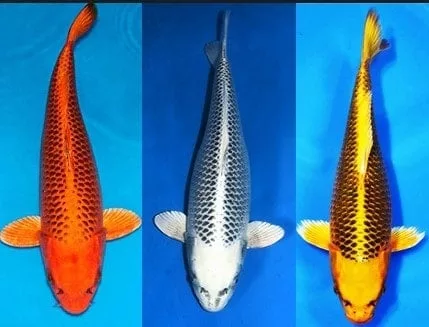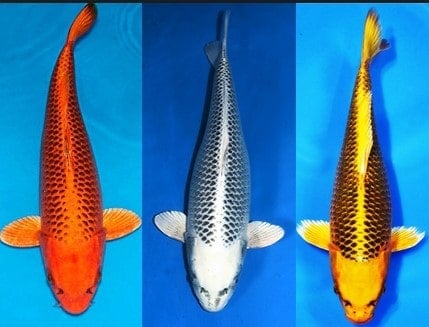
Matsuba Koi: Graceful Beauty in Ornamental Fish ????????
The world of ornamental fishkeeping is adorned with various species that captivate enthusiasts with their vibrant colors and distinct patterns. Among these, the Matsuba Koi stands out for its remarkable appearance and enduring popularity.
Introduction to Matsuba Koi ????????
The Matsuba Koi, originating from Japan, is revered for its unique scales that resemble pinecone patterns or pine needles, hence the name ‘Matsuba,’ which translates to ‘pine needle’ in Japanese. These enchanting scales are set against a contrasting backdrop, usually black, creating a stunning visual effect.
The Exquisite Matsuba Koi: Jewels of the Pond with a Pinecone Flair ????????
Imagine gliding through a serene pond, a flash of metallic brilliance catching your eye. It’s a Matsuba Koi, its scales shimmering with a base color of fiery red, sunshine yellow, or pearlescent white, delicately adorned with a mesmerizing net-like pattern. These koi, aptly named after the Japanese word for “pine needles,” are truly captivating additions to any koi pond, offering a unique blend of elegance and dynamism.
Unveiling the Matsuba: A Symphony of Colors and Patterns ????✨
The Matsuba koi belongs to the Hikari Muji class, meaning “shining plain.” However, plain is hardly the word for their captivating appearance. Each Matsuba boasts a single, resplendent base color, be it the fiery glow of Aka Matsuba (red Matsuba), the sunshine radiance of Ki Matsuba (yellow Matsuba), or the ethereal shimmer of Gin Matsuba (silver Matsuba). Upon this canvas, nature paints its masterpiece – a mesmerizing net-like pattern formed by scales with dark centers and lighter edges. This intricate reticulation, akin to a pinecone’s silhouette, adds depth and dimension, making the Matsuba koi truly stand out.
A Kaleidoscope of Choices: Unveiling the Matsuba Spectrum ????????
The beauty of the Matsuba koi lies in its diversity. While the core characteristics of a single base color and the pinecone pattern remain constant, the variations within this theme are endless. Let’s dive into the vibrant world of Matsuba sub-varieties:
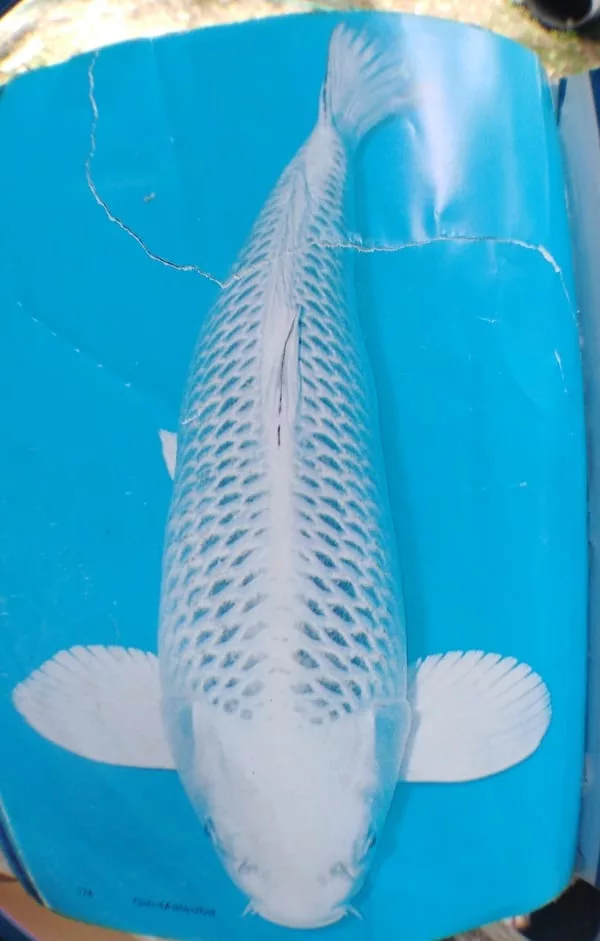
Gin Matsuba: The “silver pine cone,” a vision of ethereal elegance. Its pearlescent white base shimmers with a metallic sheen, perfectly complemented by the contrasting black reticulation.
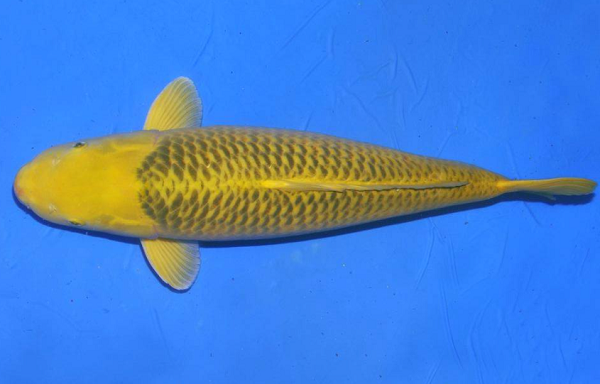
Ki Matsuba: A burst of sunshine, the Ki Matsuba’s golden hue radiates warmth and joy. Its vibrant yellow base color is a perfect canvas for the charcoal-grey pinecone pattern.
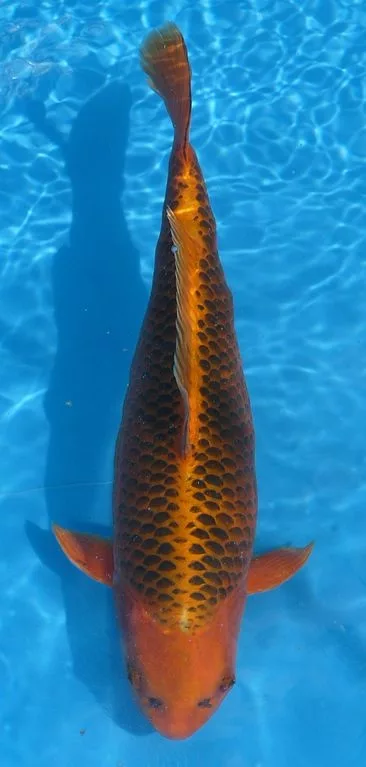
Aka Matsuba: Bold and fiery, the Aka Matsuba embodies passion and intensity. Its deep red base color is offset by the stark black reticulation, creating a striking contrast.
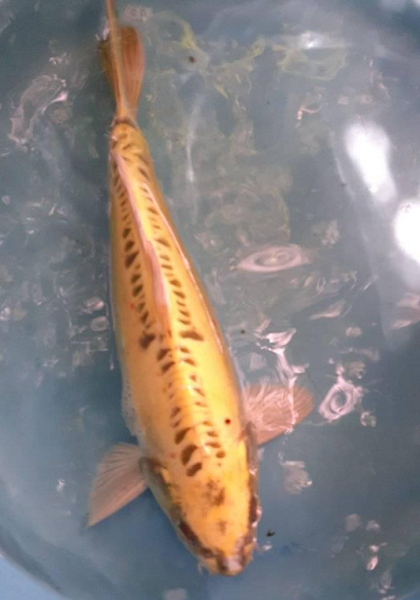
Doitsu Ki Matsuba: A double dose of sunshine, the Doitsu Ki Matsuba takes the Ki Matsuba’s vibrancy to another level. Not only does it possess the characteristic yellow base and black pinecone pattern, but its metallic sheen is even more pronounced, making it a true showstopper.
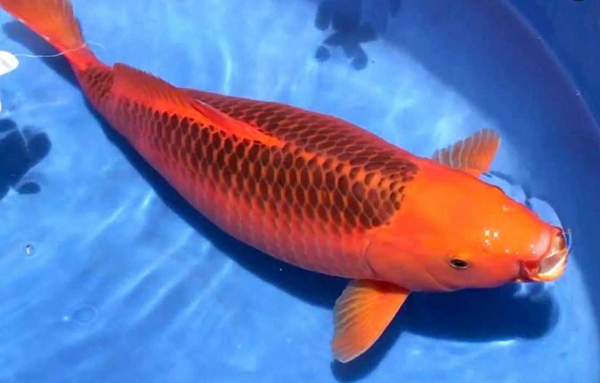
Orange Matsuba: A touch of citrus delight, the Orange Matsuba offers a softer take on the fiery spectrum. Its vibrant orange base color dances with the black reticulation, creating a playful and energetic vibe.
Pricing a Piece of Paradise: The Value of a Matsuba Koi ????????
Matsuba koi, due to their unique beauty and intricate reticulation pattern, can range in price depending on several factors:
Variety: Gin Matsuba and Doitsu Ki Matsuba, with their rarity and stunning metallic sheen, typically command higher prices compared to Ki Matsuba or Orange Matsuba.
Age and Size: As Matsuba koi mature, their colors deepen and their reticulation pattern becomes more pronounced, leading to an increase in value. Larger koi, naturally, are also priced higher.
Quality: The quality of the reticulation pattern is crucial. A consistent, evenly distributed pattern with well-defined “pine needles” adds significantly to the koi’s value.
Lineage: Koi from renowned breeders with a history of producing high-quality Matsuba can fetch premium prices.
Bringing Home a Matsuba Masterpiece: Finding Your Perfect Koi ????????
Finding the perfect Matsuba koi for your pond is an exciting journey. Reputable koi breeders and koi farms are the ideal starting point. They can not only offer a diverse selection of Matsuba koi but also provide valuable guidance on choosing the right fish for your needs and budget. Online marketplaces can also be explored, but be sure to exercise caution and deal only with reputable sellers.
Caring for Your Matsuba: Nurturing a Living Jewel ????????
Like any living creature, Matsuba koi require proper care to thrive. Providing them with a spacious, well-maintained pond with optimal water quality is essential. A healthy diet and regular monitoring of water parameters will ensure your Matsuba koi live long and vibrant lives. Remember, these koi are not just ornamental fish; they are living jewels to be treasured and cherished.
Understanding Matsuba Koi Varieties
Matsuba Koi Characteristics ????????
Primarily identified by their striking metallic scales, Matsuba Koi showcase a spectrum of hues ranging from deep reds to vibrant golds, embodying a majestic allure that captivates onlookers. The defining feature of these Koi is the bold, pinecone-like patterns that traverse their bodies, each as distinct as a fingerprint.
Different Types of Matsuba Koi ????????
Several variations exist within the Matsuba variety, including the Gin Matsuba with a silver metallic sheen and the Doitsu Matsuba with fewer scales. Each type exhibits unique characteristics while retaining the captivating Matsuba pattern.
Caring for Matsuba Koi
Creating an Ideal Habitat for Matsuba Koi is paramount to ensure their well-being. Designing a spacious pond with adequate filtration, proper aeration, and suitable water parameters is essential. Additionally, incorporating aquatic plants provides hiding spots and contributes to a balanced ecosystem.
Feeding and Nutrition ????????
A balanced diet rich in protein is crucial for Matsuba Koi’s growth and color enhancement. High-quality pellets, supplemented with occasional treats like bloodworms or brine shrimp, offer nutritional variety and promote vitality.
Health and Disease Management ????????
Regular monitoring of water quality, coupled with preventive measures like quarantine for new additions, minimizes the risk of diseases. Early detection and prompt treatment of ailments play a pivotal role in maintaining Matsuba Koi’s health.
Breeding Matsuba Koi
Breeding Matsuba Koi requires meticulous planning and attention to detail. Creating conducive breeding conditions, such as controlled water temperature and ample space for spawning, fosters successful reproduction.
Tips for Successful Breeding ????????
Introducing compatible pairs and providing optimal nutrition to breeding fish significantly enhances the chances of successful mating. Careful selection of offspring ensures the preservation of desirable traits in subsequent generations.
Appreciating Matsuba Koi in Ponds and Gardens
The visual allure of Matsuba Koi extends beyond ponds, often integrated into landscape designs to add elegance and tranquility to gardens.
Visual Appeal in Landscaping ????✨
Strategically placing these magnificent fish in ponds or water features elevates the aesthetic appeal of outdoor spaces. The interplay of light on their gleaming scales brings an enchanting ambiance to the surroundings.
Maintenance Tips ????????
Regular pond maintenance, including water quality checks and periodic cleaning, ensures a conducive environment for Matsuba Koi to thrive and flourish.
In conclusion, Matsuba Koi, with their captivating patterns and serene elegance, enrich both aquatic habitats and garden landscapes, captivating admirers with their enduring beauty.
Unique FAQs frequently ask questions
What is a Matsuba koi?
A Matsuba koi is a type of koi fish with a single-colored base and a black net-like reticulation pattern. The word “Matsuba” translates to “pine needles” in Japanese, and the pattern is said to resemble the scales of a pine cone.
What are the different types of Matsuba koi?
There are several types of Matsuba koi, each with its own base color. Some of the most popular types include:
Gin Matsuba: White base color with a black net pattern.
Ki Matsuba: Yellow base color with a black net pattern.
Aka Matsuba: Red base color with a black net pattern.
What is the Doitsu Matsuba?
The Doitsu Matsuba is a type of Matsuba koi with a leathery, scaleless skin. This makes the fish’s net pattern even more prominent.
How big do Matsuba koi get?
Matsuba koi can grow to be quite large, with some reaching up to 3 feet in length.
How long do Matsuba koi live?
Matsuba koi can live for many years, with some specimens reaching up to 50 years old.
What is the best diet for Matsuba koi?
A healthy diet for Matsuba koi should include a variety of foods, such as pellets, flakes, and vegetables.
How do I care for Matsuba koi?
Matsuba koi require a clean and well-maintained pond. The water temperature should be between 65 and 75 degrees Fahrenheit, and the pH should be between 7 and 8.
Are Matsuba koi expensive?
Matsuba koi can vary in price depending on their size, quality, and type. However, they are generally considered to be one of the more affordable types of koi fish.
You may also like
- https://www.giobelkoicenter.com/koi-egg-bound/
- https://www.giobelkoicenter.com/ghost-koi/
- https://www.giobelkoicenter.com/metronidazole-for-fish/
- https://www.giobelkoicenter.com/koi-fish-tattoo/
- https://www.giobelkoicenter.com/koi-fish-colors/
